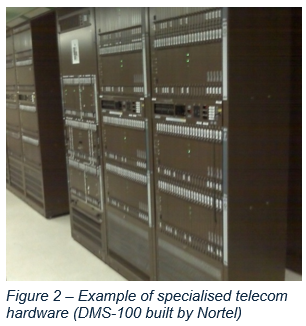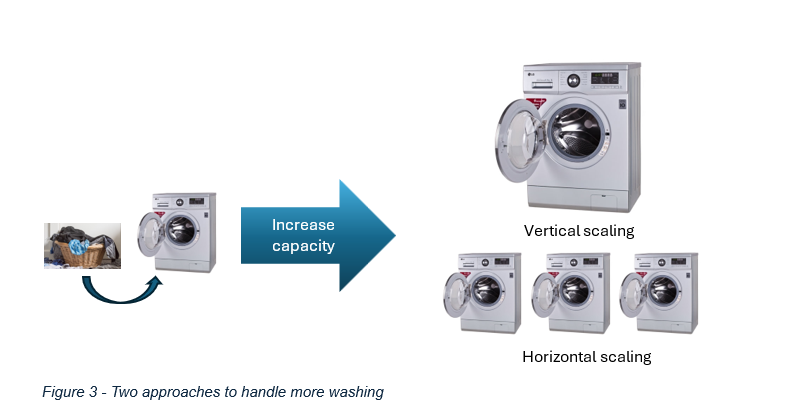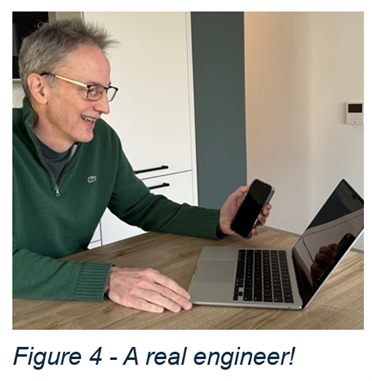Are you truly an engineer if you can’t fix my washing machine? That was a deceptively simple question that my mother asked me as a young school student.
 While attending secondary school, I developed a keen interest in computing and I wanted to continue this into higher education. After considering various computing science degrees, I stumbled on a course in “Software Engineering” at the University of Newcastle upon Tyne. At the time, I hadn’t thought of my interest as engineering, and the question on the washing machine came up when I discussed this with my mother.
While attending secondary school, I developed a keen interest in computing and I wanted to continue this into higher education. After considering various computing science degrees, I stumbled on a course in “Software Engineering” at the University of Newcastle upon Tyne. At the time, I hadn’t thought of my interest as engineering, and the question on the washing machine came up when I discussed this with my mother.
Of course, it was intended as a light-hearted tease. But a few words triggered a philosophical argument that has stuck with me to this day. After obtaining my Software Engineering degree, becoming a Chartered Engineer and following a career as a “Telecom Sales Engineer” do I have anything to prove?
Technical talk for the IET France Local Network
Last year, I joined the IET France Local Network committee and volunteered to provide a technical talk for the local members. My aim was to provide a thought-provoking presentation with a touch of humour covering the domain of software engineering and specifically my experience in the telecom world. Naturally, the conversation on the washing machine came to mind and it was an opportunity to attack the subject. My presentation was entitled “Telecoms and Software: Is It Real Engineering?”
The presentation was held on 18th March 2025, at the Quantum Global Solutions meeting room in La Défense and streamed to a wider online audience. The event drew nine attendees in person and a further twenty online. Special thanks go to the ICE France Centre for their invaluable support in organising the event.
Evolution of Telecom over the last 30 years
My presentation started by discussing the stringent requirements of a telecom network, some of which include:
- Always on – the network must always be available and any outage ends up on the national news.
- Works with all devices – telecom standardisation supports a wide range of devices roaming all over the world.
- Many users/devices – the network handles millions of users and, in recent times, the number of non-human connected devices (e.g. electricity meters) has exploded.
- High volume of usage – the network must handle a diverse range of loads including voice calls, multimedia messages and internet data.
- Peaks of traffic – load on the network may exceed the designed capacity in unpredictable ways (e.g. during an emergency).
 At the start of my career in the 1990s, telecom was dominated by hardware-based solutions. Each vendor developed their own machines with specific techniques for handling the requirements mentioned above. At that time, the telecom operators acted as “service providers” charging for end-user services like voice and messaging. This resulted in very high revenues and a boom in the industry that fed the R&D needed for custom hardware solutions. Over time, the evolution of the Internet, access to smart phones and the deployment of enhanced telecom standards (3G, 4G, 5G) changed the business model. Operators became “bit-pipes” forced to compete on the price of data volume. The result has been a drop in revenue with less available investment on telecom infrastructure. Telecom vendors have needed to adapt to build solutions at a lower cost.
At the start of my career in the 1990s, telecom was dominated by hardware-based solutions. Each vendor developed their own machines with specific techniques for handling the requirements mentioned above. At that time, the telecom operators acted as “service providers” charging for end-user services like voice and messaging. This resulted in very high revenues and a boom in the industry that fed the R&D needed for custom hardware solutions. Over time, the evolution of the Internet, access to smart phones and the deployment of enhanced telecom standards (3G, 4G, 5G) changed the business model. Operators became “bit-pipes” forced to compete on the price of data volume. The result has been a drop in revenue with less available investment on telecom infrastructure. Telecom vendors have needed to adapt to build solutions at a lower cost.
This is a classic engineering problem: how to build more with less. One strategy has been to move away from expensive custom hardware to lower cost “commercial off-the-shelf” compute servers used widely in the IT industry. It has been a major challenge to take less reliable base components to build a solution that meets all the stringent telecom requirements. This work certainly meets the criteria for engineering: innovative yet pragmatic designs that build a dependable and cost-effective solution to a real-world problem.
How are modern Telecom Software solutions “engineered”?
In the next part of my presentation, I discussed some of the key techniques used in software and telecom solutions. One key principle discussed was the use of multiple components to create a high capacity and highly reliable solution. Using the washing machine as an analogy, there are two key methods for scaling:
- Vertical scaling – to handle more washing, we can replace a small machine with a larger machine. The advantage with this approach is we can reuse the plumbing and the washing procedure remains the same. However, if the washing machine fails, none of the washing gets done!
- Horizontal scaling – to handle more washing we can install more machines of the same size. This requires more work and cost to install the extra piping and we need to change the washing procedure to separate the clothes into batches. However, if one machine fails, we can continue washing some of the clothes. Also, with some extra effort, we can improve efficiency by specialising the work (e.g. using one machine for whites and one for colours).

In a software solution, the washing machine represents a computer program (a “process”) running on a computing machine such as a server. Processes are distributed across many servers to guard against a single hardware failure. More advanced models distribute the processes across a geographic area to protect against a site disaster such as a fire or flood. The choice of design is based on breaking down the problem and choosing the solution that handles the load in a cost-effective way works even when failures occur.
Designing telecom solutions is further complicated due to the following:
- Load types: there are many conflicting loads on the network, such as control signalling (small messages occurring frequently), voice traffic (low latency between the users) and data (high throughput).
- State: telecom applications need to remember what is happening over an extended period (e.g. Richard is in Paris, he is on a call right now)
Very often there is no perfect design and the solution is a compromise made after careful analysis and review. As usage patterns evolve over time there is a constant re-evaluation and optimisation of the solution. This approach is the very essence of engineering: design, build and maintain a solution that meets requirements in a cost effective and timely manner.
Conclusion
In preparing the presentation, I’ve been able to reflect on why the “washing machine” question has always stuck in my mind. I think back on the traditional image of an engineer—someone who builds bridges, repairs engines, or, yes, fixes washing machines. This archetype is deeply rooted in physical, mechanical problem-solving. The popular image of an engineer is someone holding a spanner and gets their hands dirty. But in today’s world, where software drives complex systems from communication networks to autonomous vehicles, the principles of engineering clearly apply.
Telecom and software professionals design systems that are invisible yet indispensable. They solve problems, optimise performance, and ensure reliability all hallmarks of engineering. But because their work often lacks a tangible, mechanical output, it’s sometimes dismissed as “not real engineering”.
 Engineering is not just about the tools but also the mindset. Whether you're debugging a network protocol or repairing a mechanical device, the core principles remain the same: problem-solving, analytical thinking, and a commitment to precision.
Engineering is not just about the tools but also the mindset. Whether you're debugging a network protocol or repairing a mechanical device, the core principles remain the same: problem-solving, analytical thinking, and a commitment to precision.
So, even though I can’t fix my mother’s washing machine, I still count myself as a real engineer! Telecom and software engineers may not wield spanners or solder wires, but they design, build, and maintain the systems that power our modern lives. Engineering principles allow technologies to work in the real world bringing many benefits to society. In this regard, the role of the IET is important to inform and encourage all current and future engineers – even when they don’t realise that what they are doing is engineering!
Watch On Demand
Watch the presentation on demand below and download a copy of the slides.